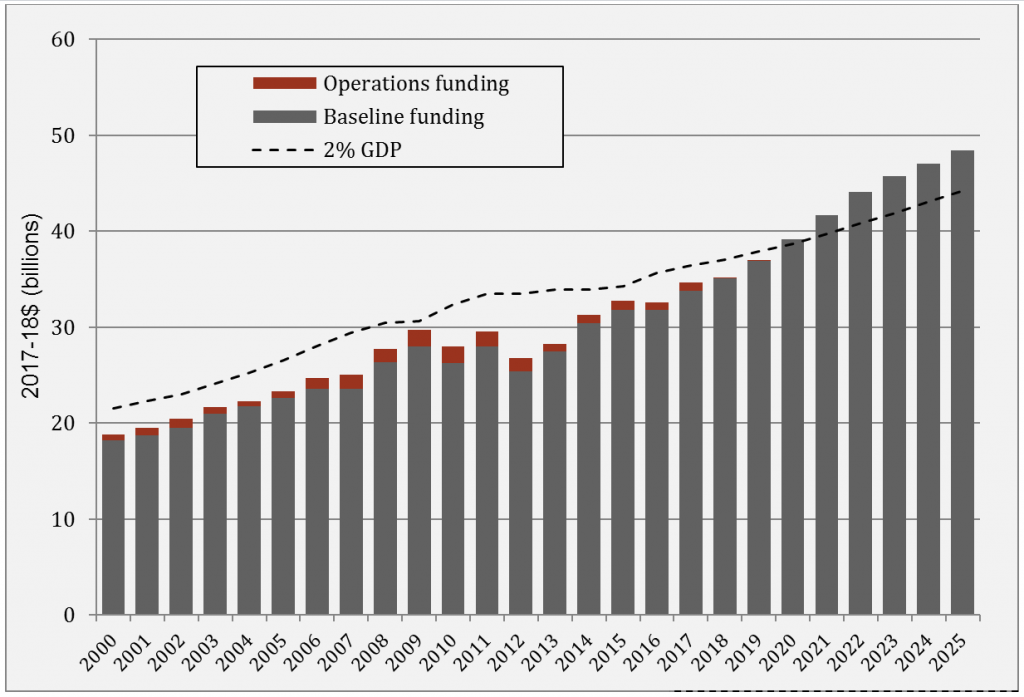
Long story short: the government continues to deliver the funding promised in its 2016 Defence White Paper.
Next financial year, the Defence budget will grow by over 6% in real terms, to reach $34.7 billion—equivalent to 1.9% of GDP. Further strong growth is planned over the next three years, with defence spending scheduled to reach 2% of GDP in 2020-21.
Of course, the largest beneficiary of the growing defence budget is capital investment and, by extension, defence industry. Over the next four years, the major capital investment program will grow from $7.4 billion $11.7 billion. Growth is proportionally even more impressive in the minor investment program, which will expand from $75 million to $235 million, again over four years. Facilities investment will experience more modest growth, going from $2 billion to only $2.6 billion over the same period.
As usual, additional operational supplementation was provided in the Budget, including $510 million for operations in Iraq and Syria (Operation OKRA) and $267 million to support operations in the Middle East (Operation ACCORDIAN). A little over $903 million will be spent in total on operations next year. At present, there are 2,300 ADF personnel deployed overseas.
The only downside for Defence in the Budget was an efficiency dividend of $304 million over four years, coming from reductions to spending on contractors, consultants and overseas travel. Although that’s only a tiny fraction of the $151 billion planned for the next four years, it should provide some measure of useful discipline.
This year’s budget saw the initial appearance of two interesting projects. The first was the recently approved Future Submarine Design and Construction project. Valued at $935 million, it’s projected to spend $127 million this year, and $319 million next year. Smaller, but no less important, is the Future Frigate Design and Construction project. With an approved value of $335 million, it’s anticipated to spend $146 million this year, and $133 million next year.
If money spent is a measure of progress, the naval shipbuilding program has come sprinting out of the blocks.
Perhaps the most impressive thing in the Budget Papers is the prodigious list of projects planned for approval next year. All up, there are 20 projects scheduled for first-pass approval, and 37 for second-pass. Key among them are the second-pass approval of the next phases of the Offshore Patrol Vessel and Future Frigate programs. On past experience, the approval of 57 projects in a single year is an ambitious goal—but it’s one that must be met if the $200 billion Integrated Investment Plan is to remain on schedule.
On the personnel front, over the next four years the Navy will grow by around 540 positions, Army by 760, and Air Force by 400. Over the same period the number of civilians will increase by around 850, from 17,350 to 18,200. The planned new civilian and military positions—which were initially announced in the White paper—reflect the additional demands flowing from the expanded scale and range of capabilities to be operated by the ADF.
So, that’s how it looks; no shocks, and no surprises. Past Defence Budgets have often been more exciting than this year’s. But if an absence of excitement is the price to pay for fulfilled promises and steady progress, bring it on.
The 2017 ASPI Defence Budget Brief will be released on 25 May.
 Print This Post
Print This Post